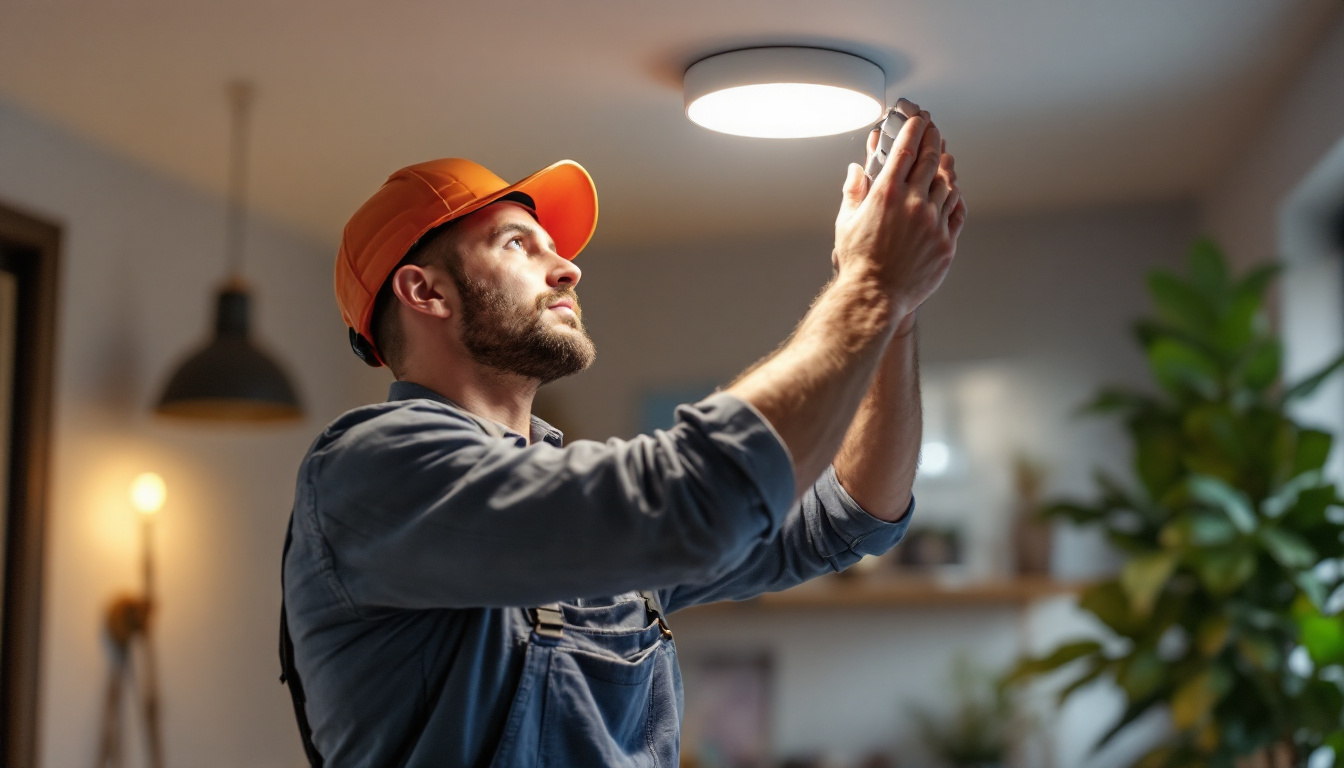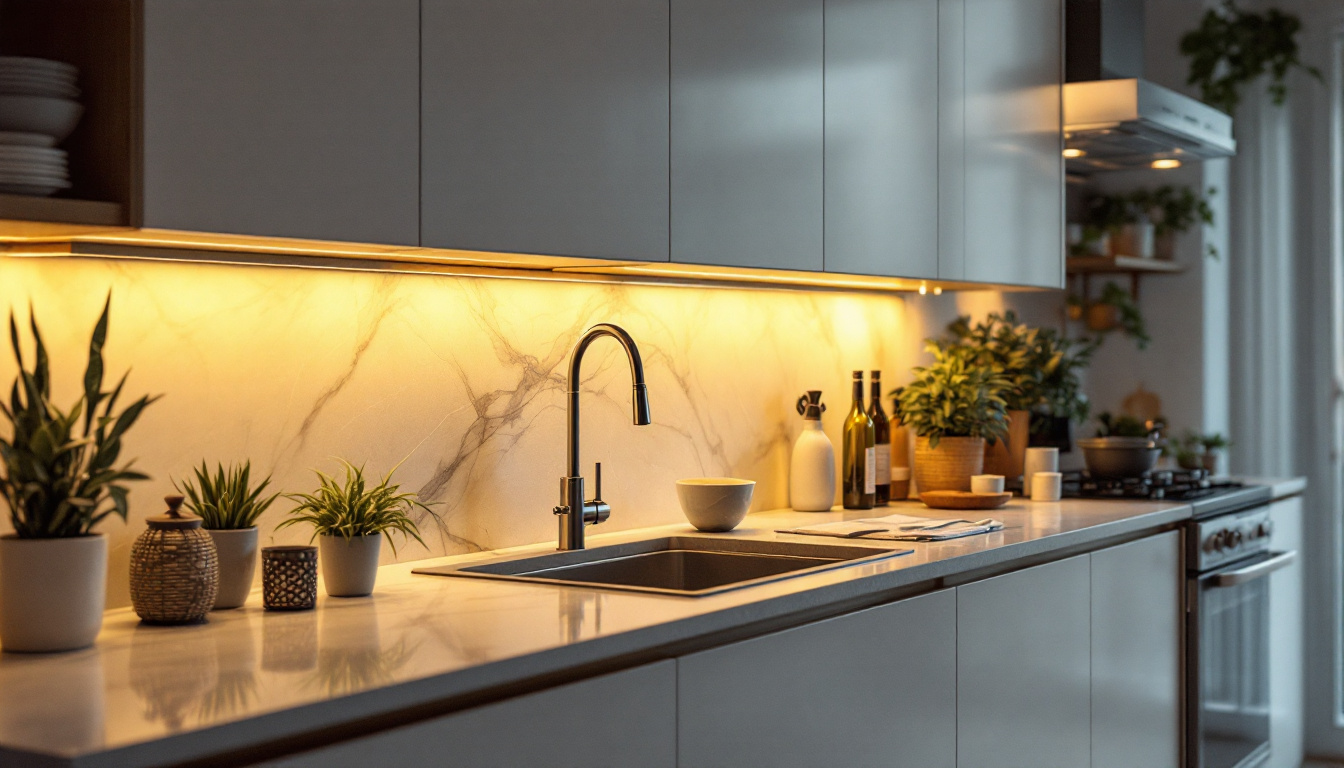
As the demand for efficient and effective lighting solutions continues to grow, understanding the concept of lumens per square foot becomes increasingly important for lighting contractors. This measure not only influences the quality of light in a space but also affects energy consumption, aesthetics, and overall project success. This article delves into the significance of lumens per square foot and how it impacts the work of lighting contractors.
At the core of effective lighting design is the concept of lumens. A lumen is a unit that measures the total amount of visible light emitted by a source. Unlike watts, which measure energy consumption, lumens provide a more accurate representation of a light source’s brightness. This distinction is crucial for lighting contractors who are tasked with creating spaces that are not only well-lit but also energy-efficient.
In various applications, the required lumens per square foot can vary significantly. For instance, an office environment may require a different lighting level compared to a retail space or a residential area. Understanding these requirements is essential for contractors to ensure that their lighting solutions meet the specific needs of each project. Additionally, factors such as the color of the walls, the type of furnishings, and the purpose of the space can all influence how light is perceived and utilized, making it imperative for designers to consider these elements during the planning phase.
Lighting design is not merely about choosing fixtures; it involves a comprehensive understanding of how light interacts with spaces. The right number of lumens can enhance productivity in workspaces, create inviting atmospheres in restaurants, or highlight products in retail settings. By calculating the appropriate lumens per square foot, contractors can tailor their designs to achieve the desired ambiance and functionality. Furthermore, the psychological effects of lighting should not be overlooked; studies have shown that well-lit environments can improve mood and increase overall satisfaction, making the role of lumens even more significant in creating spaces that resonate with their users.
To determine the necessary lumens for a given area, contractors can use a straightforward formula: multiply the desired foot-candle level by the square footage of the space. A foot-candle is a unit of illumination equal to one lumen per square foot. For example, if an office requires 50 foot-candles and measures 1,000 square feet, the total lumens needed would be 50,000 lumens.
This calculation is essential not only for selecting the right fixtures but also for ensuring compliance with local codes and standards. Many jurisdictions have specific lighting requirements for different types of buildings, and contractors must be aware of these regulations to avoid potential issues during inspections. Additionally, advancements in lighting technology, such as LED options, have made it easier to achieve higher lumen outputs while consuming less energy, allowing for more sustainable designs that can adapt to the evolving needs of modern architecture.
Energy efficiency is a critical consideration for modern lighting projects. As energy costs rise and environmental concerns grow, lighting contractors are increasingly tasked with finding solutions that minimize energy consumption while still providing adequate illumination. Understanding lumens per square foot directly impacts this goal.
When selecting lighting fixtures, contractors must consider the lumens output of each option. LED lights, for example, offer a higher lumen output per watt compared to traditional incandescent or fluorescent bulbs. This means that by choosing LED fixtures, contractors can achieve the same level of brightness with lower energy consumption, ultimately leading to cost savings for clients.
Moreover, incorporating smart lighting solutions can further enhance energy efficiency. These systems allow for automatic adjustments based on occupancy and natural light levels, ensuring that spaces are only lit when necessary. By optimizing lumens per square foot, contractors can design lighting systems that are both effective and sustainable. Additionally, the integration of daylight harvesting techniques can significantly reduce reliance on artificial lighting during daylight hours, maximizing the use of available natural light and further decreasing energy usage.
While the initial investment in energy-efficient lighting may be higher, the long-term savings can be substantial. By reducing energy consumption and extending the lifespan of lighting fixtures, contractors can help clients save on utility bills and maintenance costs. This economic advantage is particularly appealing to businesses looking to improve their bottom line while also enhancing their environmental footprint.
Furthermore, energy-efficient lighting can also add value to properties. As more consumers and businesses prioritize sustainability, having a building equipped with modern, energy-efficient lighting can make it more attractive in the real estate market. This not only enhances the property’s appeal but can also lead to higher occupancy rates and rental yields. In addition, many regions offer incentives or rebates for adopting energy-efficient technologies, which can further offset initial costs and encourage contractors to advocate for these solutions to their clients.
Beyond energy efficiency, the right lumens per square foot can significantly enhance the aesthetics and functionality of a space. Lighting contractors must balance brightness with design elements to create environments that are both visually appealing and practical.
The ambiance of a space is often dictated by its lighting. For instance, a restaurant may benefit from softer, warmer lighting to create a cozy atmosphere, while a retail store may require bright, focused lighting to highlight products. Understanding the desired ambiance allows contractors to adjust the lumens per square foot accordingly, ensuring that the lighting complements the overall design vision.
Additionally, the use of dimmable fixtures can provide flexibility in adjusting light levels based on the time of day or specific events. This adaptability not only enhances the user experience but also allows for energy savings when full brightness is not necessary. For example, during a busy lunch hour, a restaurant may opt for brighter lighting to create an energetic vibe, while in the evening, softer lighting can transform the space into a romantic setting. This dynamic capability of lighting design plays a critical role in how spaces are perceived and utilized throughout the day.
Effective lighting design can also accentuate architectural features and focal points within a space. By strategically placing fixtures and adjusting lumens, contractors can draw attention to artwork, structural elements, or landscaping. This not only enhances the visual appeal but also contributes to the overall functionality of the space.
Moreover, the choice of light color temperature can further influence how architectural features are perceived. For example, cooler light can emphasize the sleek lines of modern architecture, while warmer tones can enhance the charm of traditional designs. Additionally, using techniques such as uplighting or wall washing can create dramatic effects that highlight textures and materials, adding depth and interest to otherwise flat surfaces. By thoughtfully integrating lighting into the architectural narrative, contractors can create a cohesive and immersive experience that resonates with occupants and visitors alike.
Each environment presents unique challenges and requirements when it comes to lighting. Understanding how lumens per square foot varies across different settings is crucial for lighting contractors to deliver tailored solutions.
In commercial environments, such as offices and retail stores, lighting must be both functional and inviting. Offices typically require around 30 to 50 foot-candles, while retail spaces may need anywhere from 50 to 100 foot-candles, depending on the products being displayed. Contractors must assess the specific needs of each commercial project to determine the appropriate lumens per square foot.
Moreover, the layout of the space can influence lighting design. Open-concept offices may benefit from a uniform distribution of light, while areas with partitions may require additional task lighting to ensure that all workspaces are adequately illuminated.
In residential settings, the approach to lumens per square foot can vary widely based on personal preferences and the intended use of each room. Living areas may require softer lighting for relaxation, while kitchens and workspaces may need brighter, more focused illumination. Understanding these nuances allows contractors to create personalized lighting solutions that enhance the comfort and functionality of each home.
The lighting industry is constantly evolving, with new technologies and standards emerging regularly. For lighting contractors, staying updated on these changes is essential for maintaining a competitive edge and ensuring compliance with regulations.
As LED technology continues to advance, new fixtures and systems are being developed that offer improved efficiency and versatility. Contractors should familiarize themselves with the latest products and trends to provide clients with the best options available. This includes understanding how different fixtures impact lumens per square foot and how they can be integrated into existing designs.
Local building codes and lighting standards are continually updated to reflect advancements in technology and energy efficiency goals. Contractors must remain informed about these regulations to ensure that their projects meet all necessary requirements. This not only helps avoid potential fines or rework but also positions contractors as knowledgeable professionals in the field.
In the realm of lighting design, understanding lumens per square foot is paramount for lighting contractors. This knowledge impacts energy efficiency, aesthetics, functionality, and compliance with industry standards. By mastering the art of calculating and applying lumens effectively, contractors can deliver exceptional lighting solutions that meet the diverse needs of their clients.
As the industry continues to evolve, embracing new technologies and staying informed about best practices will be crucial for success. Ultimately, the ability to balance brightness with design and efficiency will set apart the most successful lighting contractors in a competitive marketplace.
Ready to elevate your lighting projects with the right lumens per square foot? At LumenWholesale, we provide lighting contractors with the high-quality, spec-grade lighting products you need at unbeatable wholesale prices. Say goodbye to local distributor markups and hello to superior lighting solutions that meet the highest industry standards. With our hassle-free bulk buying and free shipping, you can ensure every project shines with premium lighting at the best value. Don’t compromise on quality, affordability, or convenience. Explore our selection at LumenWholesale and find the best value in wholesale lighting for your next project.

Explore the top challenges lighting contractors face when retrofitting can lights, from navigating outdated wiring systems to ensuring energy efficiency.

Explore the intricacies of fan pricing with insights into the most common questions lighting contractors have.

Discover Maverick Monte Carlo lighting contractors’ best practices to enhance project efficiency, reduce costs by up to 20%, and ensure stunning results.

Discover how installing lights under cabinets can lead to significant cost savings for lighting contractors.